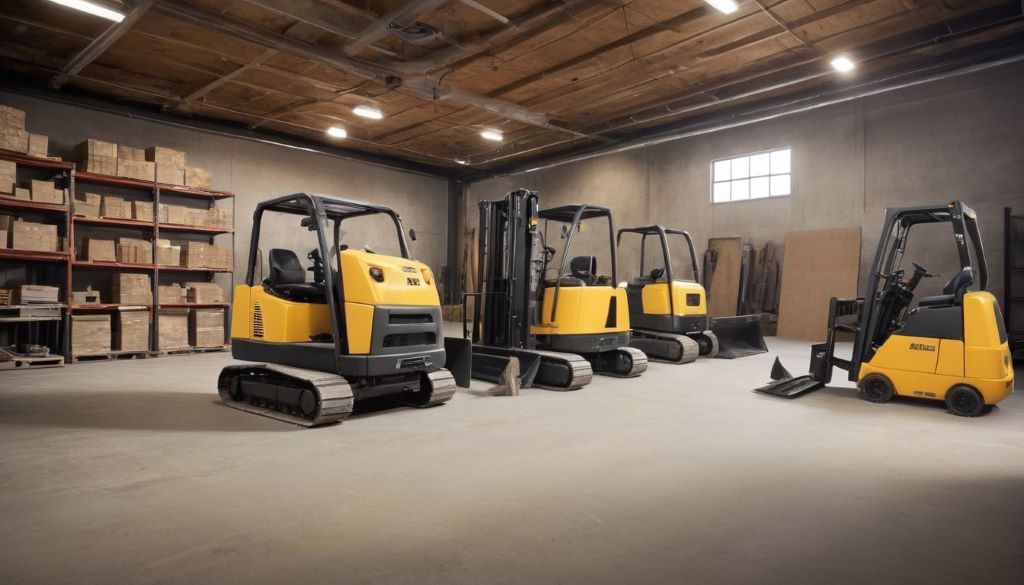
Equipment Rental Business Plan: Essential Steps
The allure of starting your own business is undeniable, and the equipment rental industry offers a compelling opportunity. It caters to a broad range of customers, from DIY enthusiasts tackling home improvement projects to contractors requiring specialized tools for large-scale jobs. But before diving headfirst into equipment acquisition, a well-crafted business plan is essential for success.
This article equips you with the essential steps to craft a comprehensive equipment rental business plan, taking you from an initial concept to a roadmap for a thriving venture.
Sharpen Your Focus: Niche Down or Diversify?
The equipment rental industry is vast. Deciding on your niche is crucial. According to a recent report by an Industry research organization, the construction equipment rental market is expected to reach a staggering. The global Equipment Rental market size was valued at USD Million in 2022 and will reach USD Million in 2028, with a CAGR of Percent during 2022-2028. However, there’s also a growing demand for specialized tools for filmmaking, event production, and even recreational activities.
Unique Selling Proposition (USP):
- Catering to a specific industry: Analyze local market needs. Are there booming construction projects or a surge in interest in outdoor activities?
- Offering a unique equipment selection: Focus on high-demand, niche equipment not readily available elsewhere.
- Providing exceptional customer service: Go beyond basic rentals. Offer delivery, training sessions, or on-site support.
Know Your Market and Your Competitors
Understanding your target audience and competitor landscape is vital. Conduct thorough market research to identify:
- Customer demographics: Who are your ideal customers? Professionals, homeowners, or a mix?
- Rental needs: What equipment are they most likely to rent, and for what projects?
- Pricing strategy: Research competitor pricing to position yourself competitively.
Craft Your Equipment Inventory
Developing your initial equipment inventory requires careful consideration. While it’s tempting to acquire everything under the sun, start strategically.
- Focus on high-demand items: Prioritize equipment that aligns with your chosen niche and market research findings.
- Consider scalability: Plan for future growth by keeping your initial investment manageable.
- Research equipment quality and maintenance: Investing in durable, reliable equipment minimizes downtime and maintenance costs.
Chart Your Financial Course
A robust financial plan is the backbone of your business. Here’s what to include:
- Startup costs: Equipment acquisition, storage space, insurance, and marketing expenses.
- Operational costs: Ongoing costs like equipment maintenance, employee salaries (if applicable), and rental software.
- Revenue projections: Forecast your projected rental income based on market research and pricing strategy.
Beyond the Basics: Financial Considerations
- Financing options: Explore loans, equipment leasing, or crowdfunding to finance your initial investment.
- Break-even analysis: Determine the point where your rental income covers all your business expenses.
Related: Understanding the Importance of OSHA Forklift Certification for a Safer Work Environment
Build a Customer-Centric Marketing Strategy
In today’s digital age, a strong online presence is crucial. Develop a marketing strategy that reaches your target audience effectively:
- Website: Create a user-friendly website showcasing your equipment, pricing, and rental process.
- Search Engine Optimization (SEO): Optimize your website content to rank higher in search engine results for relevant keywords.
- Social media marketing: Utilize social media platforms like Facebook and Instagram to connect with potential customers and showcase your equipment in action.
Plan for Operational Excellence
Streamlining your operations ensures a smooth rental process and customer satisfaction. Consider:
- Rental software: Invest in software to manage reservations, track equipment availability, and automate billing.
- Customer service training: Equip your team with the knowledge to answer customer queries and provide exceptional service.
- Maintenance and safety protocols: Establish a system for regular equipment maintenance and ensure adherence to safety regulations.
Success Story: From Humble Beginnings to Thriving Business
John Miller, founder of Equipment Business, a thriving equipment rental company in USA , emphasizes the importance of a well-defined niche. “We started by focusing on high-quality filmmaking equipment,” he shares. “By understanding our customers’ needs and offering exceptional service, we built a loyal following and expanded our inventory strategically over time.”
Conclusion: Equipping Yourself for Success
By following these essential steps and tailoring them to your unique vision, you can transform your equipment rental business idea into a reality. Remember, a well-crafted business plan is a roadmap to navigate challenges and seize opportunities. So, equip yourself with knowledge, plan strategically, and watch your business thrive.
